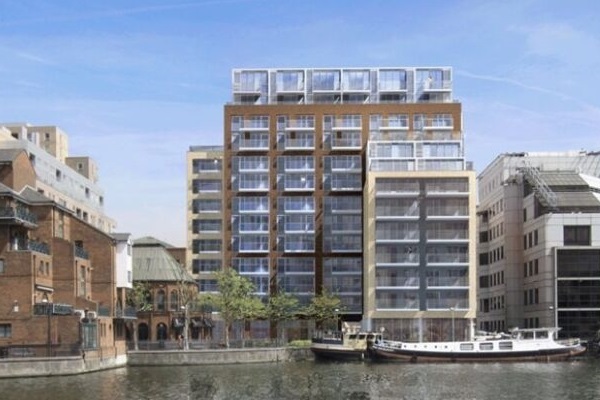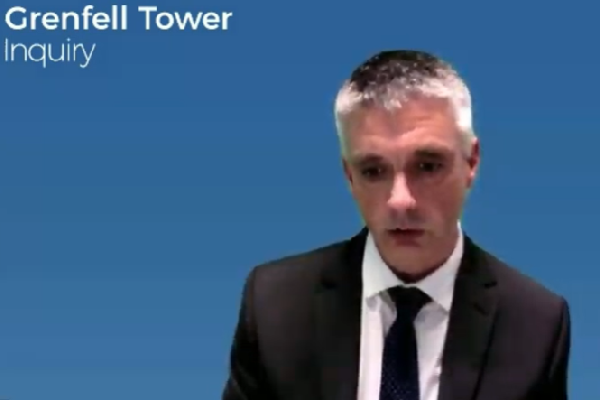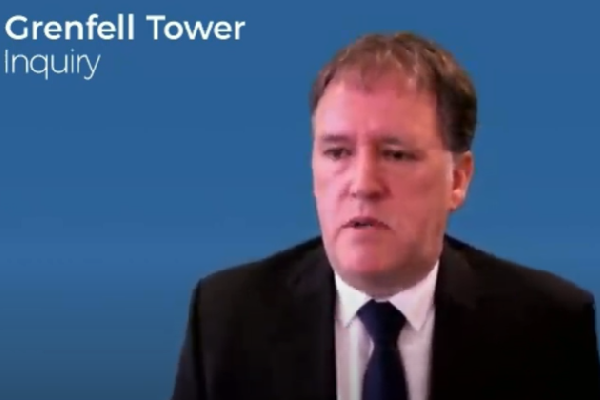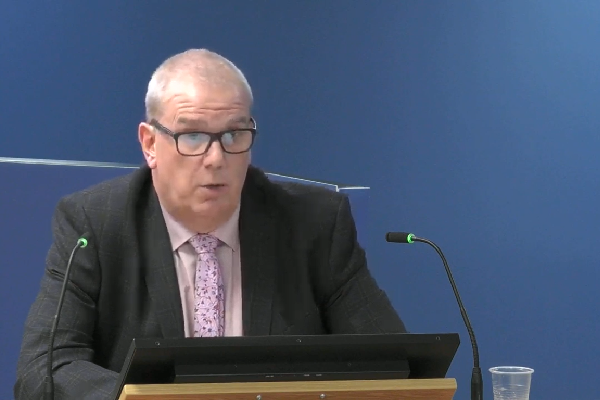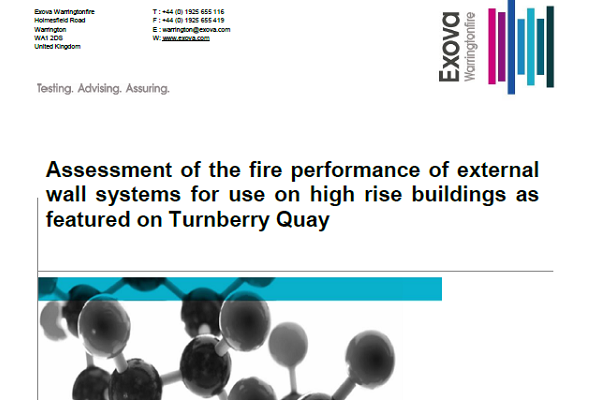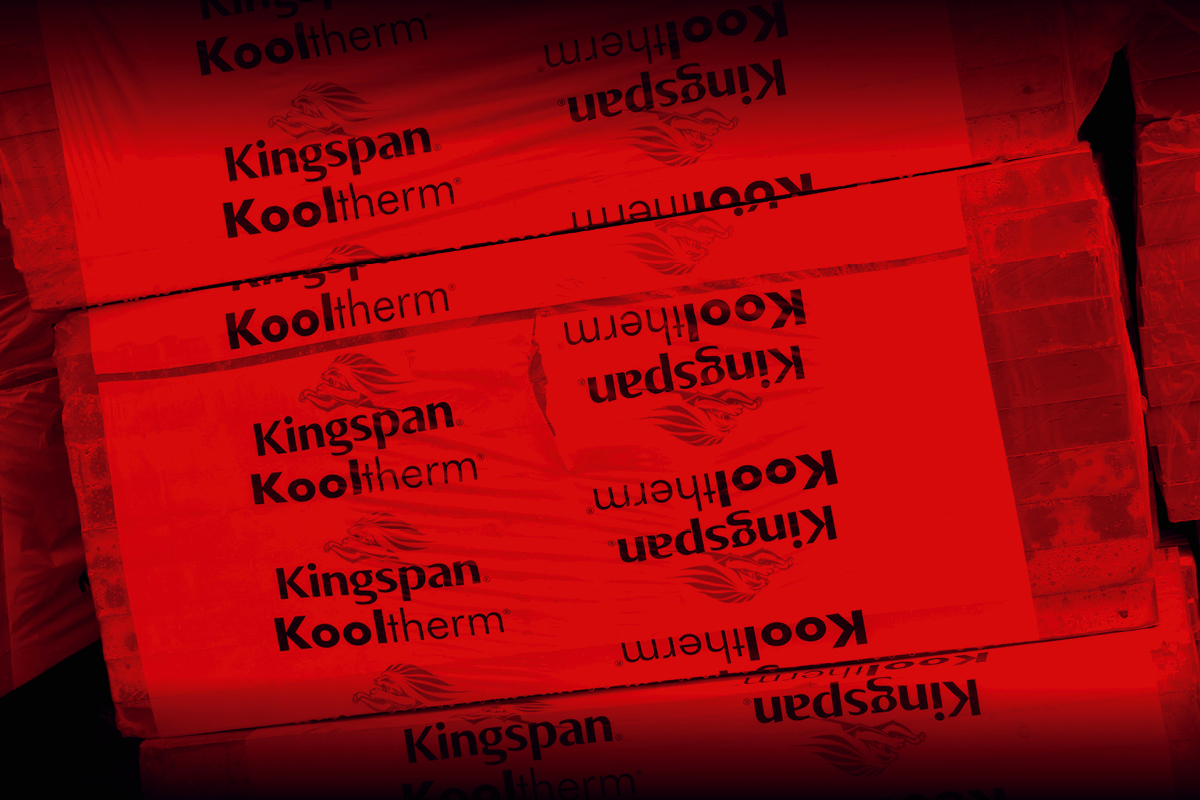Failed fire test used to help justify cladding system on block now requiring remediation
Leaseholders in an east London tower block potentially face life-changing remediation bills after a failed cladding test was used to help justify the use of combustible insulation on the building’s walls.
Residents of Turnberry Quay in Tower Hamlets were told their building required remediation work after it failed an External Wall System 1 (EWS1) assessment two years ago.
The 13-storey block features combustible K15 insulation, manufactured by Kingspan, behind solid zinc cladding, as well as the same insulation behind brick slips.
The block was completed in 2017 after a desktop assessment was carried out by fire engineers Warringtonfire a year earlier. The assessment analysed data from three large-scale tests on various cladding systems containing K15 to conclude the planned system would meet the requirements of the building regulations.
But it has since emerged through the Grenfell Tower Inquiry that one of these tests would in fact have failed to meet the required standard to pass and others were on different versions of K15 from the one ultimately used on Turnberry Quay.
The desktop study has now been withdrawn by Exova, the parent company of Warringtonfire.
In a statement (below), Kingspan told Inside Housing it did not hide the fact that the test had failed and that data from failed tests can and are often used by fire engineers to prepare desktop studies.
Residents have already spent a combined £350,000 on legal fees, surveys and fire alarms and have so far been unable to secure agreements from either developer Bellway or warranty provider the National House Building Council (NHBC) to cover the costs.
They have applied to the Building Safety Fund, but have not yet been allocated funding. They could still end up being billed for the costs themselves, which could run to millions of pounds if no alternative funding source is located.
None of the residents have been able to sell their homes until the issues are resolved.
The Grenfell Tower Inquiry revealed last year that Kingspan were put under pressure over the compliance of their insulation by industry figures in late 2013.
As a result, the firm commissioned new large-scale tests on cladding systems containing its product, hoping to demonstrate that it could be used safely.
One of these tests, carried out in March 2014, paired the insulation with combustible high-pressure laminate cladding panels and saw flames spread above the top of the test rig after 43 minutes.
This should have resulted in the test being stopped immediately and declared a failure, but the Building Research Establishment (BRE), which runs a testing house, allowed it to run for its full one-hour duration.
One of their technicians then issued a test report, which he accepted under questioning “doesn’t necessarily make it very clear unless you read it carefully that the test has failed”.
The inquiry heard that Kingspan had used the test report to help secure 29 desktop studies, none of which identified the fact that the test had failed. Turnberry Quay is the first of these blocks to have been publicly identified.
It also emerged that this and other 2014 tests were carried out on a trial version of K15 which never made it to market.
The building was completed by Bellway in 2017 and is currently owned by Adriatic Land, with management services provided by Pinnacle.
In a letter sent to leaseholders in December last year, Exova said the desktop study had been “unconditionally withdrawn with immediate effect”, citing “contradictory evidence” about the safety of the system which had since come to light.
In a statement to Inside Housing, Kingspan said it “would have clearly been understood as [a failure] by the fire engineer” who authored the desktop study and the fact that it had failed was “at no time obscured by Kingspan”.
The firm said it has run extensive testing of K15 since the Grenfell Tower fire and has “full confidence in the safety of [the insulation] when used in a compliant system”.
Nigel Butterworth, a leaseholder at Turnberry Quay, told Inside Housing: “I’m quite shocked and really quite disgusted to be honest that a failed test could form part of a desktop study report.”
He added that leaseholders were unable to take action against Kingspan as they have no contract with them and would be reliant on a civil law case, which would have no guarantee of success.
He called on Bellway to step in and fund the remediation, saying: “Bellway were the developer, they built a building that didn’t comply with the regulations. I think they should ultimately just take responsibility instead of waiting for someone else to step up.”
Bellway continues to claim that the block did comply with regulations at the time it was built. These required insulation to be of limited combustibility – which K15 is not – or to be justified by large-scale testing.
This latter point had been interpreted by the industry as permitting desktop studies, which were widely used in the industry to justify combustible cladding and insulation systems before the Grenfell Tower fire.
A spokesperson for the builder said: “Bellway takes the fire safety of our developments extremely seriously, and we have invested significant resources into tackling fire and building safety issues to ensure that leaseholders and residents are safe in their homes.
“At Turnberry Quay, Bellway used an insulation product that complied with building regulations at the time of construction and was widely used across the sector. It is only subsequent information that has highlighted potential issues with this product.
“We are working with the managing agent, Pinnacle, to progress the NHBC Section 4 claim, as this is the primary route to remediation for buildings still within the 10-year warranty period. We are also supporting their application to the Building Safety Fund.”
The NHBC offered building control services on the job – ultimately signing off the cladding system as compliant – and provided a warranty against defects.
A spokesperson for the organisation said: “We confirm that NHBC did undertake building control at the Turnberry Quay and provide warranty cover to the homeowners.
“The fire safety claim that has been submitted in relation to the external wall system is being investigated. We cannot comment further other than to say that we will always meet any obligations we have to our policyholders under our Buildmark warranty product.”
Exova, which also produced a fire safety strategy for the Grenfell Tower refurbishment, declined to comment.
Kingspan’s statement
“The large-scale test on which the desktop study relied was a failed test from 2014. This would have clearly been understood as such by the fire engineer who authored the desktop study, and was at no time obscured by Kingspan.
Kingspan has engaged in a very extensive testing and review process and has full confidence in the safety of K15 when used in a compliant system that has successfully been tested to the BS 8414 standard.
Kingspan has completed extensive BS 8414 large-scale system fire tests using 14 different cladding systems incorporating current K15 that have successfully met the relevant criteria set by BR 135. The 2014 failed test has been repeated with standard K15 and it too failed.
This extensive testing programme supports the retention of K15 in existing cladding systems on high rise buildings which meet current UK Government guidance where:
• The system is correctly installed and has passed a full-scale BS 8414 fire test
• There is a technically robust desktop study in place based on accurate test data
• A fire engineering assessment was completed on the building on which the system was installed
When K15 was recommended in a system by Kingspan for use in a particular building, and the existing suite of BS 8414 tests does not support that use, then Kingspan is fully committed to acting swiftly to evaluate what action is required, and to providing remediation as appropriate.”
Sign up for our fire safety newsletter
Already have an account? Click here to manage your newsletters
